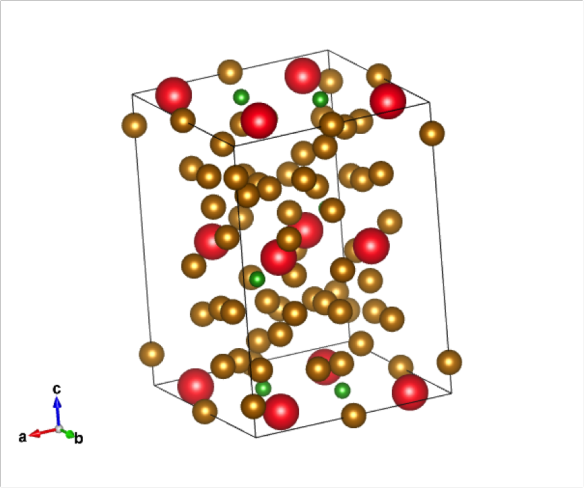Rare earth magnets: how crystallography can help you stay attractive
What does it look like?

What is it?
If you had to pick the three greatest achievements in modern technology, it's a no-brainer: the moon landings, ubiquitous digital computing and the spin cycle on your washing machine.
The last in part is due to the material shown above, the "neodymium magnet". The material has a chemical structure Nd2Fe14B, so it's really mostly iron (the Nd are the red atoms in the structure shown above, the B is green). They're used in a range of applications, from electric motors to hard discs. In the last few decades, a range of powerful new magnetic materials have been discovered which use the rare-earth elements as a constituent; it's one of the hidden revolutions in material science.
Neodymium magnets have several features that make them industrially useful, one of which is high coercivity. You’d be annoyed if your washing machine stopped working because the magnets died. Coercivity is the ability of a magnet to retain its magnetization in the presence of an externally applied field.
How does this come about? The structure shown above is tetragonal, which means if you rotate the crystal around the ab plane in 90 degree steps, it looks the same. The neodymium atoms would much rather align their magnetic moments along the c axis than in the other directions. This preference for aligning in a particular direction is called the magnetic anisotropy. In a cubic material like iron, you don't get this distinction between the three axes, and the anisotropy is far lower.
When the magnets are manufactured, they're processed to induce texture. This means that, instead of being randomly arranged, the individual crystal grains in the magnets are oriented so that their c- axes are more or less pointing in the same direction.
These two features together combine to give the high coercivity: the grains are pointing in the same direction, the moments would rather be pointing that way, so it takes a lot of effort to demagnetize the magnet.
Where did the structure come from?
The chemical structure of Nd2Fe14B is #1511143 in the Crystallography Open Database. The figures were produced with VESTA.
References:
Rivoirard et al., "Texture investigation of hot-forged Nd-Fe-B magnets", Philosophical Magazine A, 80 (2000) 1955
R. Skomski and D.J. Sellmyer, "Anisotropy of rare-earth magnets", Journal of Rare Earth Magnets, 27 (2009) 675






